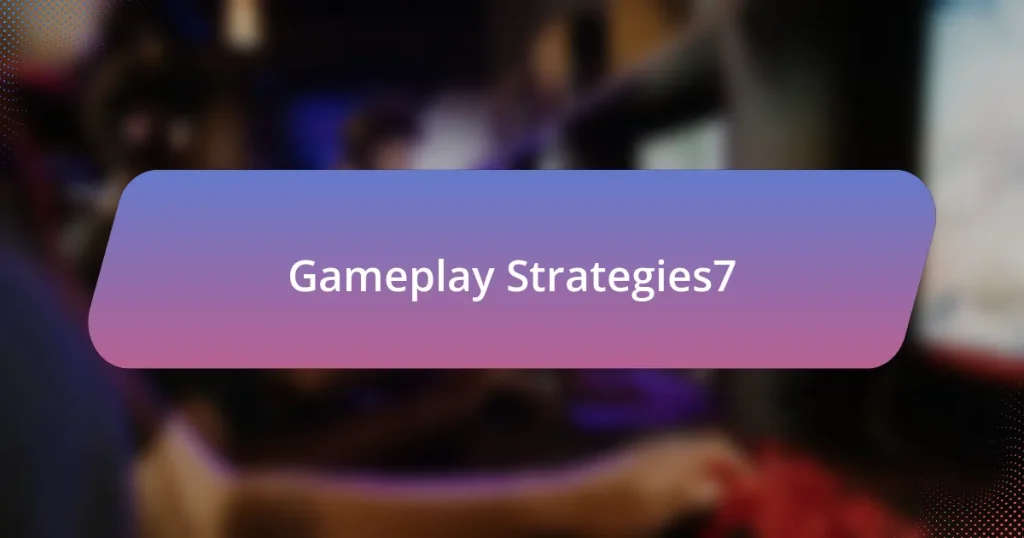The article focuses on the strategic concepts of split pushing and team fighting in multiplayer online battle arena games. It defines split pushing as a tactic where a player applies pressure in a lane to force enemy responses, while team fighting involves coordinated group engagements to secure kills and objectives. Key characteristics, advantages, and risks associated with each strategy are explored, along with conditions that favor one approach over the other. The article emphasizes the importance of team composition, game state, and communication in determining when to utilize split pushing or team fighting for optimal gameplay outcomes.

What are Split Pushing and Team Fighting?
Split pushing is a strategy in multiplayer online battle arena games where a player isolates themselves in a lane to apply pressure on towers or objectives, forcing the enemy team to respond, while team fighting involves all players engaging in a coordinated battle against the opposing team. Split pushing aims to create map pressure and gain advantages through objectives, while team fighting focuses on eliminating enemy champions to secure victory in skirmishes. The effectiveness of each strategy depends on team composition, game state, and objectives, with split pushing often being favored when a team has a strong individual champion, and team fighting being preferred when the team can synergize their abilities effectively.
How do Split Pushing and Team Fighting differ in strategy?
Split pushing and team fighting differ fundamentally in their strategic objectives and execution. Split pushing focuses on applying pressure to a lane to force opponents to respond, often leading to objectives like towers or inhibitors being taken, while team fighting emphasizes coordinated group engagements to secure kills and control the battlefield. In split pushing, a single player typically isolates themselves in a lane, creating a distraction that can lead to a numerical advantage elsewhere, whereas team fighting requires all members to engage simultaneously, relying on synergy and positioning to outmaneuver the enemy. This distinction is crucial in determining when to adopt each strategy based on the game state, team composition, and objectives.
What are the key characteristics of Split Pushing?
The key characteristics of split pushing include the strategic division of a team’s resources to apply pressure on multiple lanes simultaneously, allowing for the potential to secure objectives like towers or inhibitors. This tactic often involves a single champion, typically one with high mobility or survivability, pushing a lane while the rest of the team engages in other activities, such as team fights or securing vision. Effective split pushing requires map awareness, as the split pusher must be able to escape or join fights when necessary. Additionally, it capitalizes on the enemy team’s need to respond to the pressure, potentially creating advantageous situations for the split pusher’s team elsewhere on the map.
What are the key characteristics of Team Fighting?
The key characteristics of Team Fighting include coordination, positioning, and synergy among team members. Coordination ensures that team members execute strategies simultaneously, maximizing their effectiveness in combat. Positioning is crucial as it allows players to control the battlefield, avoid crowd control effects, and target priority enemies. Synergy refers to the complementary abilities of team members, which can create powerful combinations that enhance overall damage output and survivability. These characteristics are essential for achieving victory in engagements against opposing teams.
Why are these strategies important in gameplay?
Strategies like split pushing and team fighting are crucial in gameplay because they dictate how a team can effectively control the map and secure objectives. Split pushing allows a team to apply pressure on multiple lanes, forcing opponents to respond and potentially creating opportunities for other objectives, such as towers or dragons. Conversely, team fighting is essential for engaging the enemy in coordinated battles, maximizing damage output and utilizing team synergy to secure kills and objectives. The importance of these strategies is underscored by their impact on win rates; for instance, teams that effectively utilize split pushing can increase their chances of victory by creating advantageous situations, as evidenced by data from competitive matches where strategic lane pressure led to higher success rates.
How do they impact the overall game strategy?
Split pushing and team fighting significantly impact overall game strategy by dictating resource allocation and player positioning. Split pushing allows one player to apply pressure on a lane, forcing opponents to respond, which can create opportunities for the remaining team members to secure objectives or engage in advantageous fights elsewhere. Conversely, team fighting focuses on coordinated group engagements, maximizing damage output and control over key areas, often leading to decisive victories in skirmishes. The choice between these strategies can determine the pace of the game; for instance, a successful split push can lead to towers being taken down, while effective team fighting can result in team wipe and control of critical map objectives like Baron or Dragon.
What role do they play in winning matches?
Split pushing plays a crucial role in winning matches by applying pressure on the map and forcing opponents to respond. This strategy allows a team to create advantageous situations, such as gaining objectives or securing kills while the enemy is distracted. For instance, in professional play, teams often utilize split pushing to draw enemy resources away from key areas, leading to opportunities for securing towers or other objectives. This tactical approach can significantly shift the momentum of a match, as evidenced by teams that successfully implement split pushing strategies often achieving higher win rates in competitive settings.

When should players choose Split Pushing?
Players should choose split pushing when they have a champion capable of quickly taking down towers and can safely apply pressure in a side lane. This strategy is effective when the opposing team is grouped together, allowing the split pusher to create a numbers advantage elsewhere on the map. Additionally, split pushing is advantageous when the player can avoid direct confrontations, especially if they are ahead in items or levels, as it forces the enemy team to respond to the pressure, potentially leading to objectives being secured by their teammates.
What conditions favor Split Pushing over Team Fighting?
Split pushing is favored over team fighting when a team has a strong individual champion capable of taking down towers quickly and can effectively pressure multiple lanes. This strategy is particularly effective when the enemy team lacks crowd control or when they are grouped together, making it difficult for them to respond to split push threats. Additionally, if the enemy team is behind in gold or experience, they may struggle to defend against a split push, allowing the pushing team to secure objectives more efficiently. The presence of teleport abilities on champions can also enhance the effectiveness of split pushing, as it allows for quick reinforcements if the enemy attempts to engage.
How does the enemy team composition affect this choice?
The enemy team composition significantly influences the choice between split pushing and team fighting. If the enemy team has strong crowd control and area-of-effect damage champions, team fighting becomes riskier, making split pushing a more viable strategy to avoid direct confrontations. Conversely, if the enemy team lacks mobility or has squishy champions, team fighting may be advantageous, allowing for quick eliminations and securing objectives. This strategic decision is supported by the fact that team compositions with high synergy can capitalize on their strengths in grouped engagements, while those with weaker synergy may struggle in team fights, thus favoring split pushing as a safer alternative.
What map conditions are ideal for Split Pushing?
Ideal map conditions for split pushing include a significant advantage in lane pressure, such as when one team has a stronger split pusher or when the enemy team is occupied elsewhere on the map. Additionally, having vision control in the enemy jungle and key areas allows for safer split pushing, as it reduces the risk of being ambushed. Furthermore, the absence of enemy structures nearby can facilitate a more effective split push, as it allows the split pusher to apply pressure without immediate threat of retaliation. These conditions enable the split pusher to create map pressure, forcing the enemy team to respond, which can lead to advantageous team fights or objectives for the split pushing team.
What are the advantages of Split Pushing?
The advantages of split pushing include creating pressure on multiple lanes, forcing opponents to respond, and enabling strategic map control. By pushing a lane, a player can draw enemy champions away from team fights, potentially leading to advantageous 4v5 scenarios for their team. Additionally, split pushing can lead to the destruction of towers and objectives, contributing to overall map dominance. This strategy is particularly effective when a champion is strong in one-on-one situations, allowing them to secure objectives while the enemy team is occupied elsewhere.
How does Split Pushing create pressure on the enemy team?
Split pushing creates pressure on the enemy team by forcing them to respond to multiple threats simultaneously. When a player splits off from the main group to push a lane, the enemy team must decide whether to send members to counter the split pusher or risk losing objectives, such as towers or inhibitors, in other lanes. This diversion of resources can lead to imbalances in team fights, as the enemy may be outnumbered or unable to defend effectively. Additionally, successful split pushing can create opportunities for the split pusher’s team to secure objectives elsewhere, further increasing the strategic advantage.
What are the risks associated with Split Pushing?
The risks associated with split pushing include vulnerability to ambushes, loss of team cohesion, and potential for unfavorable trades. When a player splits from the team to push a lane, they may become isolated and susceptible to being ganked by multiple opponents, leading to a significant disadvantage. Additionally, split pushing can create a disconnect within the team, as the remaining members may struggle to defend against enemy advances or secure objectives without the split pusher’s presence. This strategy can also result in unfavorable trades if the split pusher is caught out, as the team may be forced to engage in a fight without their key damage dealer or tank, potentially leading to a loss of momentum and map control.

When should players opt for Team Fighting?
Players should opt for Team Fighting when they have a numerical advantage or superior positioning over the enemy team. Engaging in Team Fighting is most effective when players can capitalize on their team’s strengths, such as synergy between champions or abilities that can control the battlefield. For instance, if a team has a strong initiation champion and the enemy is outnumbered, the likelihood of securing a favorable outcome increases significantly. Additionally, Team Fighting is advantageous when objectives like towers or dragons are contested, as winning the fight can lead to securing these critical resources.
What scenarios make Team Fighting more effective?
Team Fighting is more effective in scenarios where teams have strong synergy and coordinated abilities. For instance, when a team possesses a combination of crowd control, area-of-effect damage, and healing, they can maximize their impact in a team fight. Additionally, situations where the enemy team is grouped together, such as during objectives like Dragon or Baron, enhance the effectiveness of Team Fighting, as concentrated damage can be applied to multiple targets simultaneously. Historical data from competitive matches shows that teams with well-timed ultimates and communication often secure victories in these clustered engagements, reinforcing the importance of teamwork and strategy in successful team fights.
How does team coordination influence the success of Team Fighting?
Team coordination significantly enhances the success of Team Fighting by ensuring that all members execute strategies effectively and respond to opponents in a unified manner. Effective communication and synchronization among team members lead to better positioning, timely ability usage, and the ability to focus fire on priority targets, which are crucial for winning engagements. Studies in competitive gaming have shown that teams with high coordination levels achieve higher win rates, as they can adapt to dynamic situations and capitalize on enemy mistakes more efficiently.
What are the ideal conditions for engaging in Team Fights?
The ideal conditions for engaging in team fights include having a numerical advantage, optimal positioning, and the presence of key abilities or ultimates. A numerical advantage, such as having one or more additional teammates, increases the likelihood of winning the fight. Optimal positioning allows teams to control the battlefield, ensuring that damage dealers are protected while maximizing their output. Additionally, engaging when key abilities or ultimates are available can turn the tide of battle, as these powerful skills often provide significant advantages in damage or crowd control. These conditions are supported by strategic gameplay principles observed in competitive matches, where teams often capitalize on these factors to secure victories.
What are the benefits of Team Fighting?
The benefits of team fighting include enhanced coordination, increased damage output, and improved strategic control over objectives. When players engage in team fights, they can effectively combine their abilities and resources, leading to a higher chance of defeating opponents. This collective effort often results in securing key objectives such as towers, dragons, or barons, which can significantly influence the game’s outcome. Additionally, successful team fights can create momentum, allowing teams to push their advantage and gain map control. Statistics show that teams that excel in coordinated team fights often have higher win rates, as they can capitalize on their synergy and teamwork to outmaneuver and outplay their opponents.
How does Team Fighting contribute to securing objectives?
Team fighting significantly contributes to securing objectives by allowing teams to eliminate opponents, thereby gaining numerical superiority. This advantage enables teams to control key areas on the map, such as towers, dragons, or barons, which are crucial for overall strategy and victory. For instance, in games like League of Legends, successful team fights often lead to the opportunity to take objectives uncontested, as the opposing team is either dead or forced to retreat. This dynamic is supported by statistics showing that teams that win team fights are more likely to secure objectives, as evidenced by data from competitive matches where objective control correlates with team fight success rates.
What are the potential downsides of Team Fighting?
The potential downsides of team fighting include increased risk of losing multiple players simultaneously and the possibility of poor coordination leading to unfavorable outcomes. In team fights, if one player makes a mistake, it can result in a chain reaction that causes the entire team to be wiped out, significantly impacting the game’s momentum. Additionally, team fights often require precise timing and communication; failure in these areas can lead to missed opportunities and wasted resources. Statistics show that teams with lower synergy and communication often experience higher defeat rates in team fights, emphasizing the importance of teamwork and strategy in these scenarios.
How can players effectively transition between Split Pushing and Team Fighting?
Players can effectively transition between split pushing and team fighting by assessing the enemy’s positioning and the state of their own team. When a player is split pushing, they should constantly monitor the minimap for enemy movements; if multiple enemies are seen away from their team, the player can push harder, potentially taking down towers or objectives. Conversely, if the enemy team is grouped and ready to engage, the player should retreat and regroup with their team to prepare for a team fight. This strategic decision-making is supported by the fact that successful transitions often rely on communication and awareness, as teams that coordinate their movements can capitalize on enemy mistakes, leading to advantageous fights or objectives.
What indicators suggest a shift from Split Pushing to Team Fighting?
Indicators that suggest a shift from Split Pushing to Team Fighting include the presence of multiple enemy champions in one lane, the availability of key objectives like Baron or Dragon, and the need to respond to a significant threat, such as an enemy pushing a lane aggressively. When several opponents are grouped together, it becomes risky to continue split pushing, as the potential for being outnumbered increases. Additionally, if critical objectives are up for contest, teams often prioritize team fighting to secure those objectives, which can lead to a strategic advantage. Lastly, if a team has a composition that excels in team fights, such as having strong area-of-effect abilities or crowd control, this further incentivizes a transition from split pushing to engaging in team fights.
How can players communicate strategy changes to their team?
Players can communicate strategy changes to their team through clear and concise verbal communication, in-game pings, and chat messages. Effective communication ensures that all team members understand the new strategy, whether it involves transitioning from split pushing to team fighting or vice versa. For instance, using specific terms like “group mid” or “split push bot” can quickly convey the intended action. Studies in team dynamics show that teams with strong communication skills perform better in competitive settings, highlighting the importance of clarity and immediacy in strategy discussions.
What are best practices for choosing between Split Pushing and Team Fighting?
The best practices for choosing between Split Pushing and Team Fighting involve assessing team composition, map control, and objectives. When a team has champions that excel in one-on-one situations and can quickly take down towers, Split Pushing is often more effective. Conversely, if the team has strong area-of-effect abilities and synergy, Team Fighting may yield better results.
Additionally, evaluating the enemy team’s ability to respond is crucial; if they lack mobility or crowd control, Split Pushing can create advantageous situations. Conversely, if the enemy team is grouped and ready to engage, Team Fighting may be necessary to secure objectives or defend against pushes.
Ultimately, the decision should be based on real-time game dynamics, including the current state of the game, champion strengths, and the positioning of both teams.













